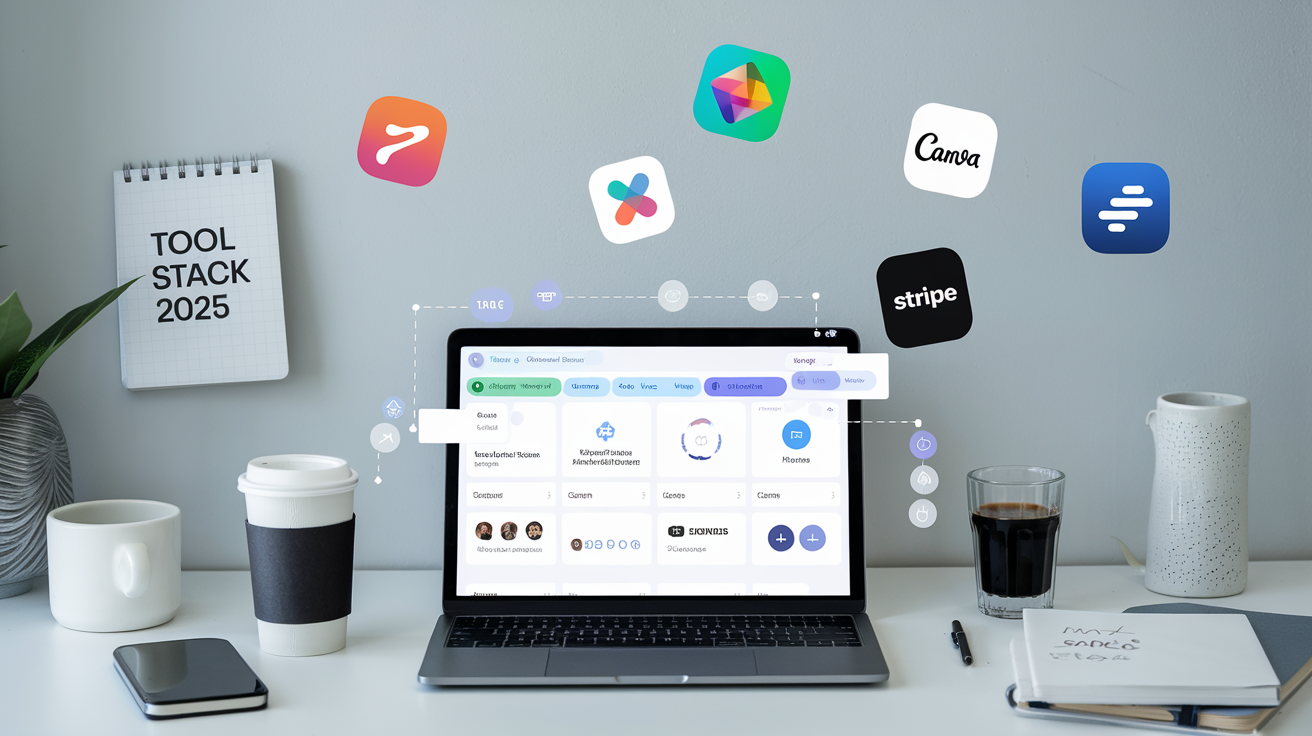7 Easy Ways to Repurpose Content & Save Hours Each Week
Are you exhausted from constantly creating new content? Do you feel like you’re on a never-ending hamster wheel, churning out blog posts, videos, and social media updates just to keep up?
Content repurposing is your secret weapon to break free from the content creation grind. Instead of starting from scratch every time, you can transform one piece of content into multiple formats, reaching different audiences and maximizing your time investment.
This comprehensive guide reveals seven proven strategies to repurpose content effectively, helping you save hours each week while actually increasing your reach and engagement. You’ll discover practical methods that successful content creators use to multiply their output without burning out.
Why Content Repurposing Is a Game-Changer
Content repurposing isn’t just about saving time—it’s about working smarter, not harder. When you repurpose content strategically, you’re solving multiple business challenges simultaneously.
The Science Behind Content Repurposing
People learn and consume information differently. Some prefer reading detailed blog posts, others want quick video explanations, and many love bite-sized social media content they can consume on the go.
By repurposing your content across multiple formats, you’re meeting your audience where they are and how they prefer to consume information.
The Business Benefits
Repurposing content delivers measurable results:
- Increased reach across different platforms and audience segments
- Better SEO through multiple content pieces targeting related keywords
- Higher engagement as people encounter your ideas in their preferred format
- Improved brand consistency through repeated exposure to your core messages
- Reduced content creation stress and more time for strategic thinking
The Time-Saving Reality
Content creators who repurpose effectively report saving 40-60% of their content creation time. Instead of creating seven pieces of content from scratch, you create one comprehensive piece and adapt it into six additional formats.
The 7 Most Effective Content Repurposing Strategies
These proven methods will transform how you approach content creation and help you maximize every piece of content you produce.
Strategy 1: Transform Blog Posts Into Video Content
Your blog posts contain everything you need for compelling video content. The research is done, the structure is clear, and the value is proven.
Simple Blog-to-Video Methods
Tutorial videos: Turn how-to blog posts into step-by-step video tutorials Explanation videos: Transform complex topics into easy-to-understand visual explanations Behind-the-scenes videos: Share the process or story behind your written content Key points videos: Create quick videos highlighting the main takeaways
Practical Implementation
Start with your most popular blog posts since they’ve already proven their value with your audience.
Create an outline that follows this structure:
- Hook (why this matters)
- Main points (2-3 key takeaways)
- Examples or demonstrations
- Clear call-to-action
Pro tip: Record yourself explaining your blog post naturally, as if you’re teaching a friend. This authentic approach often performs better than scripted content.
Strategy 2: Break Long-Form Content Into Bite-Sized Social Posts
Every comprehensive blog post or video contains multiple social media posts waiting to be extracted. This strategy multiplies your content exponentially.
Content Extraction Techniques
Quote graphics: Pull powerful quotes or statistics from your content Tip carousels: Create Instagram carousel posts with individual tips Thread posts: Turn blog sections into Twitter or LinkedIn threads Story highlights: Use key points for Instagram or Facebook stories
The “One-to-Many” Formula
From one 2,000-word blog post, you can create:
- 5-7 quote graphics
- 3-4 carousel posts
- 2-3 thread posts
- 10-15 individual tips or insights
- 1-2 polls or questions for engagement
Implementation strategy: As you write long-form content, mark quotable sections and key insights that would work as standalone posts.
Strategy 3: Convert Written Content Into Podcast Episodes
Your blog posts and articles contain ready-made podcast episode outlines. This repurposing method is especially powerful because podcasts have exploded in popularity.
Blog-to-Podcast Conversion Process
Choose evergreen content that doesn’t rely heavily on visual elements Create a conversational outline based on your written structure Add personal stories or examples that weren’t in the original post Include current context or updates since the original publication
Podcast Repurposing Variations
Solo episodes: You discussing your own content in depth Interview format: Have someone interview you about your topic Panel discussions: Invite others to discuss your content topic Q&A episodes: Answer questions related to your written content
Bonus strategy: Turn your podcast episodes back into blog posts by transcribing and editing them into written format.
Strategy 4: Create Email Newsletter Series From Comprehensive Content
Your in-depth content can become valuable email series that nurture your subscribers over time. This approach builds stronger relationships while maximizing your content investment.
Email Series Structures
Educational series: Break a comprehensive guide into 5-7 daily emails Challenge series: Turn how-to content into a step-by-step challenge Case study series: Share different aspects of success stories across multiple emails FAQ series: Answer common questions from your content over several emails
Implementation Framework
Week 1: Introduction email setting up the series Week 2-4: Core content emails (one main point per email) Week 5: Summary email with all resources and next steps Week 6: Feedback request and related offer
Pro tip: Email series often have higher engagement rates than individual newsletters because subscribers anticipate the next installment.
Strategy 5: Transform Data and Lists Into Visual Content
Information-rich content like statistics, tips, and step-by-step processes translate beautifully into visual formats. Visual content typically receives higher engagement across all platforms.
Visual Content Opportunities
Infographics: Perfect for statistical data or process explanations Carousel posts: Ideal for lists, tips, or step-by-step guides Quote graphics: Highlight key insights or powerful statements Before/after comparisons: Show transformations or improvements Timeline graphics: Display processes or historical information
Tools for Visual Content Creation
Beginner-friendly options:
- Canva: Templates for every social platform
- Unfold: Story templates for Instagram
- Over: Simple graphic design for mobile
Advanced options:
- Adobe Creative Suite: Professional design capabilities
- Figma: Collaborative design platform
- Sketch: Mac-based design tool
Strategy 6: Repurpose Content Across Different Platforms
Each social media platform has its own culture and content preferences. Smart repurposing adapts your core message to fit each platform’s unique characteristics.
Platform-Specific Adaptations
LinkedIn: Professional angle with industry insights and career advice Instagram: Visual storytelling with behind-the-scenes content TikTok: Entertaining, fast-paced versions of your tips YouTube: Detailed explanations with visual demonstrations Twitter: Quick tips and engaging questions Facebook: Community-focused content encouraging discussion
The Platform Adaptation Framework
Start with your core message then ask:
- What does this audience care about most?
- How do they prefer to consume content on this platform?
- What format performs best here?
- How can I adapt my tone for this community?
Example: A blog post about “Time Management for Entrepreneurs” becomes:
- LinkedIn: “5 Time Management Strategies Every Leader Needs”
- Instagram: Visual tips with productivity flat-lay photos
- TikTok: “POV: You finally figured out time management”
- YouTube: “How I Manage My Time Running 3 Businesses”
Strategy 7: Create Resource Libraries and Ultimate Guides
Combine multiple pieces of related content into comprehensive resource libraries. This strategy positions you as an authority while providing immense value to your audience.
Resource Library Concepts
Ultimate guides: Combine related blog posts into one comprehensive guide Toolkit collections: Gather templates, checklists, and resources mentioned across your content Course materials: Transform your best content into structured learning experiences Reference libraries: Organize content by topic for easy access
Implementation Strategy
Audit your existing content to identify themes and topics you’ve covered multiple times Group related content into logical categories Fill content gaps by creating bridge content that connects existing pieces Package everything into a valuable resource that requires email signup
Pro tip: Resource libraries often become your most popular lead magnets because they provide concentrated value.
Advanced Content Repurposing Techniques
Once you’ve mastered the basics, try these advanced strategies to maximize your content’s potential.
The Content Pyramid Strategy
Create a content hierarchy that flows from one comprehensive piece down to multiple smaller pieces:
Top tier: Comprehensive guide or course Second tier: Individual blog posts covering specific aspects Third tier: Social media posts highlighting key points Bottom tier: Quotes, tips, and micro-content
Cross-Pollination Method
Combine insights from multiple pieces of content to create entirely new pieces. This approach helps you develop fresh angles on familiar topics.
Example: Combine insights from three different blog posts about productivity, wellness, and entrepreneurship to create “The Entrepreneur’s Guide to Productive Wellness.”
The Update and Refresh Strategy
Revisit older content and update it with new insights, examples, or data. This gives you fresh content without starting from scratch.
Look for:
- Statistics that need updating
- New examples or case studies
- Changed industry standards
- Additional insights you’ve gained
Seasonal Repurposing
Adapt evergreen content for seasonal relevance. This strategy helps you stay current while leveraging proven content.
Examples:
- “Goal Setting for the New Year” (from general goal-setting content)
- “Summer Productivity Tips” (from general productivity content)
- “Back-to-School Organization” (from general organization content)
Tools and Systems for Efficient Content Repurposing
The right tools can streamline your repurposing process and save even more time.
Content Planning Tools
Notion: Create content databases that track repurposing opportunities Airtable: Build content calendars with repurposing workflows Trello: Visual boards for managing content across multiple formats Asana: Task management for repurposing projects
Content Creation Tools
Loom: Quick video creation for repurposing blog content Canva: Visual content creation for social media repurposing Headliner: Turn podcast episodes into video content Buffer or Hootsuite: Schedule repurposed content across platforms
Analytics and Tracking
Google Analytics: Track which repurposed content performs best Social media insights: Monitor engagement across different formats Email analytics: Measure success of repurposed email content YouTube Analytics: Understand video performance metrics
Common Content Repurposing Mistakes to Avoid
Avoid these pitfalls that can undermine your repurposing efforts.
Mistake 1: Direct Copy-Paste Approach
Simply copying content from one platform to another without adaptation rarely works. Each platform has its own culture and content preferences.
Solution: Always adapt your content to fit the platform’s style, audience, and format requirements.
Mistake 2: Ignoring Platform-Specific Best Practices
What works on LinkedIn might fail on TikTok. Each platform has different optimal posting times, content lengths, and engagement strategies.
Solution: Research platform-specific best practices and adapt your repurposed content accordingly.
Mistake 3: Over-Repurposing Without Fresh Insights
Repeatedly sharing the same content without adding new value can fatigue your audience. People want fresh perspectives, not endless recycling.
Solution: Add new insights, examples, or contexts each time you repurpose content.
Mistake 4: Neglecting Quality for Quantity
Repurposing should maintain or improve content quality, not diminish it. Rushing through adaptations often results in poor-quality content.
Solution: Maintain high standards for all repurposed content, even if it means creating fewer pieces.
Mistake 5: Forgetting to Track Performance
Without measuring results, you can’t improve your repurposing strategy. Different formats and platforms will perform differently for your audience.
Solution: Implement tracking systems to measure engagement, reach, and conversions for all repurposed content.
Building Your Content Repurposing System
Create a systematic approach to content repurposing that becomes part of your regular workflow.
The Weekly Repurposing Routine
Monday: Review last week’s content performance and identify repurposing opportunities Tuesday: Create visual content from recent blog posts or videos Wednesday: Develop social media posts from long-form content Thursday: Plan email newsletter content from existing materials Friday: Batch create content for the following week
The Content Audit Process
Monthly, review your content library:
- Which pieces performed best?
- What topics resonate most with your audience?
- What content gaps exist that repurposing could fill?
- Which older content deserves refreshing?
Setting Up Your Repurposing Workflow
Create templates and systems:
- Content brief template for each repurposing project
- Platform-specific guidelines for adaptations
- Quality checklist to ensure consistency
- Publishing schedule to avoid overwhelming your audience
Measuring Your Content Repurposing Success
Track these metrics to optimize your repurposing strategy:
Engagement Metrics
Likes, comments, and shares across all repurposed content formats Time spent on repurposed content (blog posts, videos) Click-through rates from repurposed social media posts Email open rates for repurposed newsletter content
Reach and Growth Metrics
Follower growth across platforms where you share repurposed content Website traffic from repurposed social media content Email subscriber growth from repurposed lead magnets Brand mention increase from expanded content reach
Efficiency Metrics
Time saved per week through repurposing Content output increase (pieces created per hour invested) Cost per piece of content when factoring in repurposing Return on investment for repurposed content campaigns
Your Content Repurposing Action Plan
Transform your content creation process with this step-by-step implementation plan.
Week 1: Foundation Setup
Audit your existing content to identify your best-performing pieces Choose 2-3 repurposing strategies that align with your goals and audience Set up basic tracking systems to measure your results Create templates for your chosen repurposing methods
Week 2: Implementation
Select your first piece of content to repurpose Create 3-5 different formats using your chosen strategies Develop a publishing schedule that spreads content across appropriate timeframes Begin tracking performance from day one
Week 3: Optimization
Analyze initial results and identify what’s working best Adjust your strategy based on early performance data Expand successful formats and eliminate underperforming ones Document your process for future efficiency
Week 4: Scale and Systematize
Create a weekly repurposing routine that fits your schedule Build a content library of repurposed materials Establish quality standards for all repurposed content Plan next month’s repurposing strategy based on results
The Future of Content Repurposing
Content repurposing will become even more important as content consumption continues to diversify. Smart creators are already preparing for emerging formats like audio-only social media, interactive content, and AI-assisted personalization.
The key is maintaining focus on value creation while maximizing efficiency. Your audience doesn’t care how much time you spent creating content—they care about the value it provides.
Start with one strategy, master it, then expand. Content repurposing isn’t about doing everything—it’s about doing the right things consistently and efficiently.
Your content has more potential than you realize. Every blog post, video, or piece of valuable content you create contains the seeds of multiple additional pieces that can reach new audiences and achieve your business goals.
Stop starting from scratch every time. Start repurposing strategically, and watch your content work harder while you work smarter.
What piece of content will you repurpose first?






